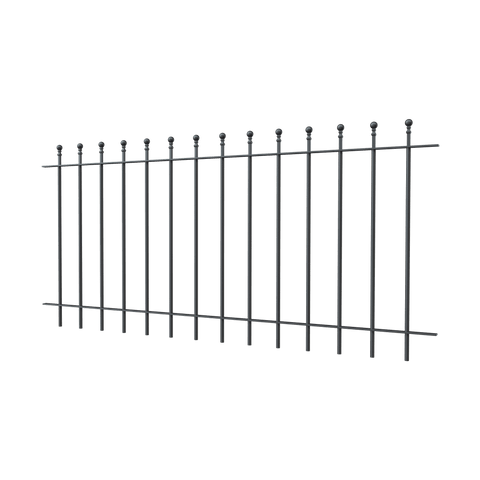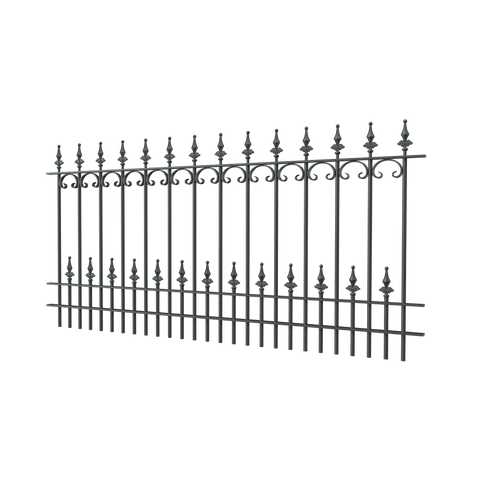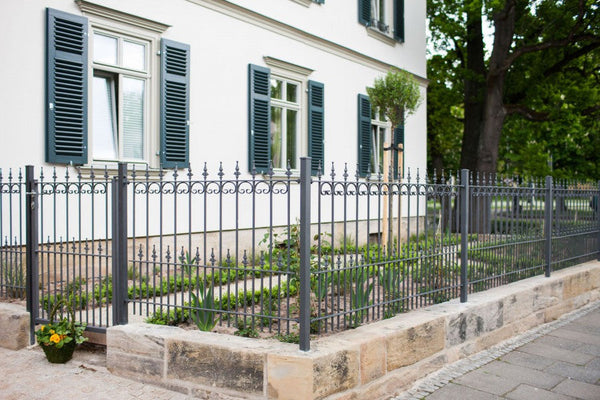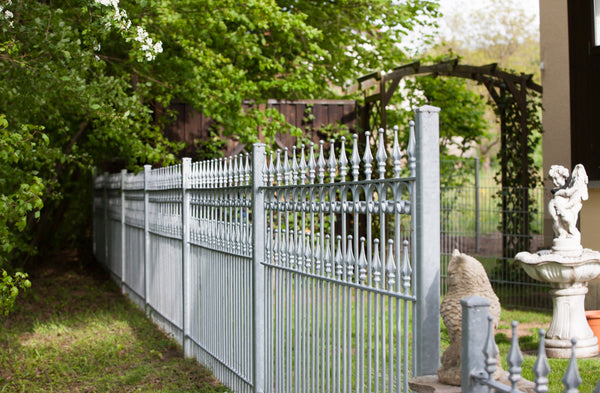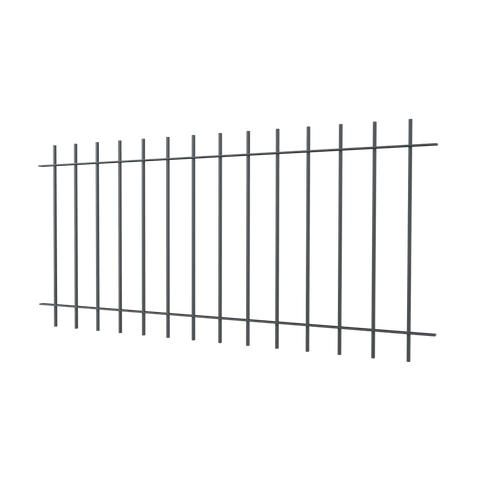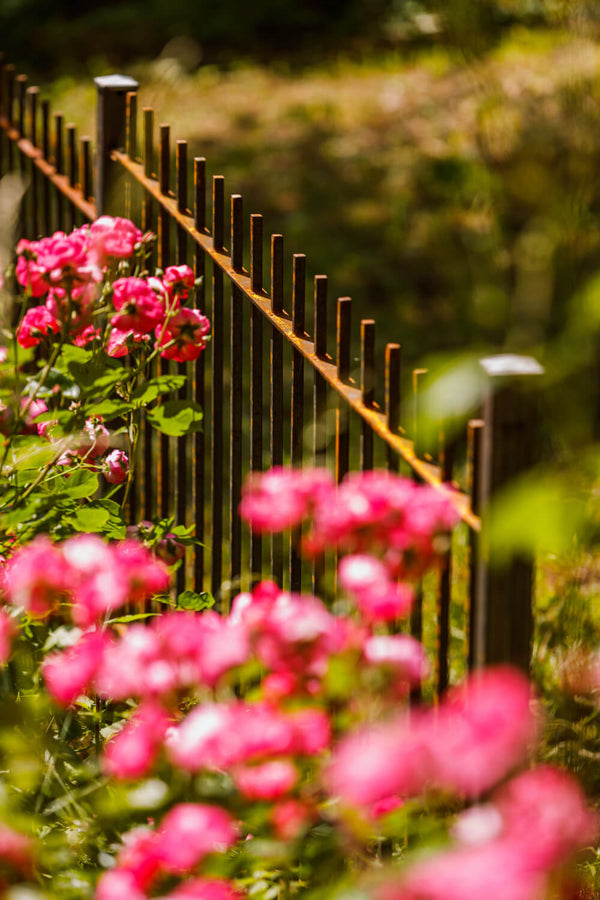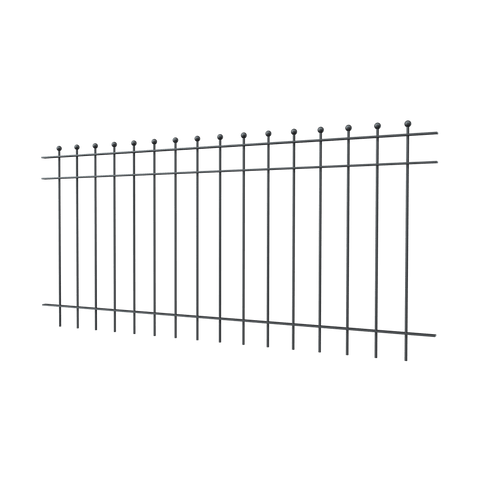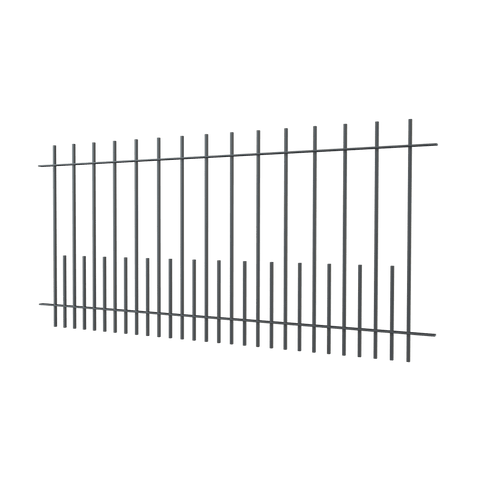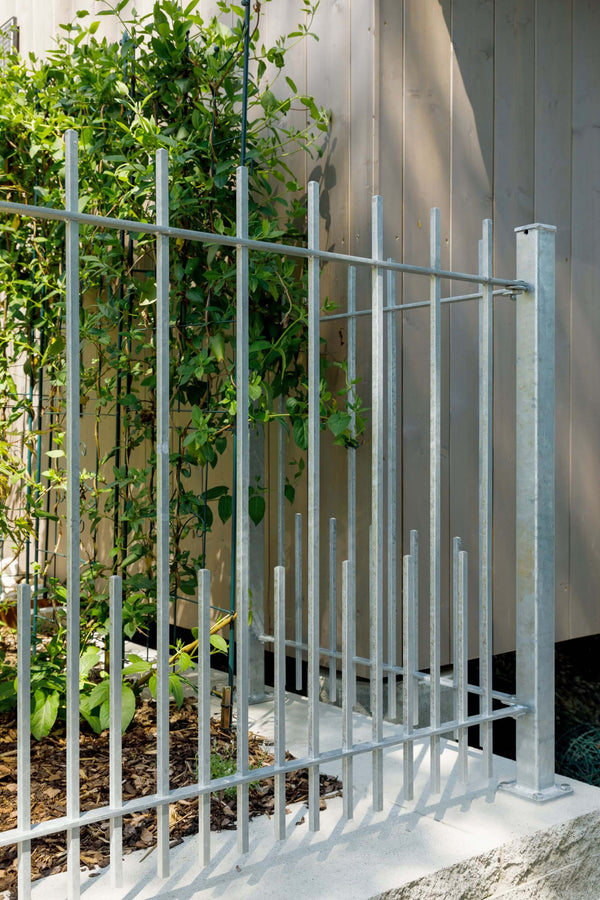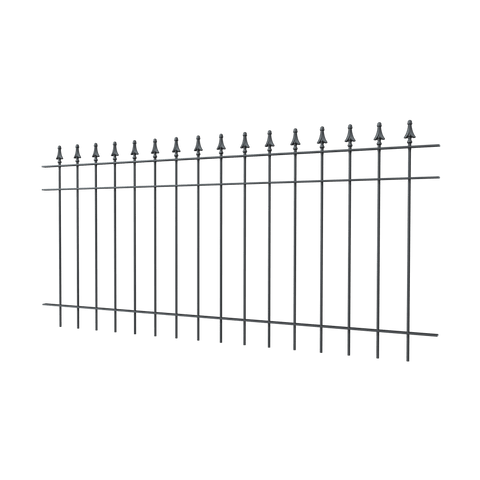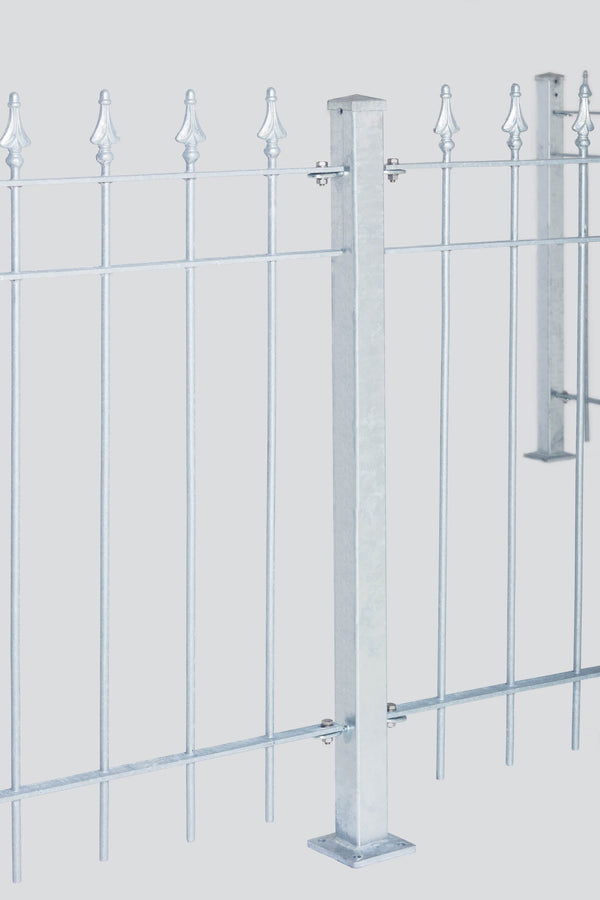How to clean metal properly: How to clean fences and railings

Metal fences, gates, or railings are generally very robust and easy to maintain, but they still require regular cleaning – especially if the metal isn't coated. Dirt, deposits, and rust not only detract from the appearance, but can also affect the stability and durability of the metal.
In our guide, you'll learn how to clean metal quickly, easily, and effectively. With a little regular care, you can keep your metal fence elements, railings, and gates in good condition.
Cleaning metal for light soiling
Step 1: Preparing the metal
In the first step, remove any loose Dirt: Brush loose dirt such as leaves, dust, and cobwebs off the metal parts with a broom or brush.
Then rinse the metal with a garden hose to remove finer dirt and dust.
Step 2: Cleaning
Now, choose a cleaning agent suitable for the material of your fence, railing, or gate. Mild soapy water is sufficient for most types of metal. Avoid using harsh cleaning agents, as these can damage the metal.
Apply the cleaning agent to the metal with a sponge or brush.
Gently scrub the metal with the sponge or brush to remove dirt and debris.
After a short contact time (see instructions on the packaging), rinse the cleaning agent thoroughly with a garden hose.
Finally, dry the metal with a clean cloth to avoid water spots.
Cleaning Metal for Heavy Soiling
If the dirt is stubborn, you can use a mixture of water and vinegar or rubbing alcohol. Apply the mixture to the dirt and let it work for a few minutes. Then scrub off the dirt with a sponge or brush and rinse the metal thoroughly with water.

Removing rust from metal
To remove heavy rust from metal, you can first brush off loose and coarse rust particles and then use a rust remover. Important: Follow the manufacturer's instructions on the packaging carefully.
After removing rust and cleaning your metal, you can seal it with a protective varnish. This protects the metal from dirt, deposits, and rust.
We have compiled a detailed step-by-step guide for removing rust from metal here for you » To the rust removal guide

More Tips for Cleaning Metal
- The best time to clean metal is on a cool, cloudy day. This prevents the cleaning agent from drying too quickly and leaving water spots.
- Work in small sections. This will keep cleaning from becoming too tedious.
- Wear gloves when cleaning metal. This will protect your hands from sharp edges and cleaning agents.
- Test any new cleaning agent on an inconspicuous area of the metal before applying it to the entire surface. This way, you can ensure that the cleaning agent doesn't damage the metal.
Frequently Asked Questions about Metal Cleaning
Can you clean metal with vinegar?
Whether you can clean metal with vinegar depends on the metal. On stainless steel, vinegar effectively removes fingerprints, stains, and light discoloration. Vinegar dissolves tarnish and verdigris on copper. On aluminum surfaces, vinegar removes oxidation. On brass, vinegar can be used to remove tarnish. Important: Always dilute vinegar heavily with water!
How do you clean metal before painting?
Before metal can be painted, loose dirt particles and paint residue are removed from the surface. The metal is then degreased with a cleaner and then sanded. If the metal is rusty, the rusty areas must be treated with a rust remover. Finally, the surface is rinsed with water. After drying, the metal can be painted.
Can you clean metal with baking soda?
Yes, baking soda can be used as a household cleaning agent for some metals. It is an inexpensive and environmentally friendly alternative to chemical cleaners. A baking soda and water mixture is suitable for stainless steel, copper, aluminum, and brass, for example.
How can you clean oxidized metal?
Cleaning oxidized metal depends on the type of metal:
Aluminum
- Light oxidation: Mix a mixture of equal parts vinegar and water and apply it. Let it work for a few minutes and then rub it off with a cloth.
- Heavy Oxidation: For heavy oxidation, use a commercially available aluminum oxide cleaner. Follow the manufacturer's instructions.
Copper
- Light Oxidation: Use a mixture of equal parts lemon juice and salt. Let it work for a few minutes and then rub it off with a cloth.
- Heavy Oxidation: Use a commercially available copper cleaner. Follow the manufacturer's instructions.
Iron and Steel
- Light Oxidation: Mix baking soda and water into a paste and apply it. Let it soak in for a few minutes and then rub it off with a cloth or brush.
- Heavy oxidation (rust): Use a commercially available rust remover. Follow the manufacturer's instructions.
Brass
- Light oxidation: A mixture of ketchup and salt has been shown to clean brass. Let it soak in for a while and then rub it off with a cloth.
- Heavy oxidation: Use a commercially available brass cleaner. Follow the manufacturer's instructions.

Best Choice: Powder-Coated Metal
If you don't want to regularly clean your fence, gate, or railing, you should opt for models with a powder coating. Powder-coated metal fences, gates, and railings are a particularly attractive and easy-care choice. The coating offers the metal optimal protection against weather influences such as moisture, UV radiation, and extreme temperatures.
Thanks to their smooth surface, powder-coated metal fences, gates, and railings are also particularly easy to clean. Dirt and debris have little chance of settling. This way, you'll enjoy your metal jewelry for a long time.

Tip: Are you looking for a new garden fence? The wrought iron fences from ELEO Express impress with premium quality, maximum durability, and an affordable price.

Good to know: At ELEO Express, we use powder coating in a complex duplex process. This makes our fences, gates, and railings even more resistant to weather and corrosion.
Artikel teilen

